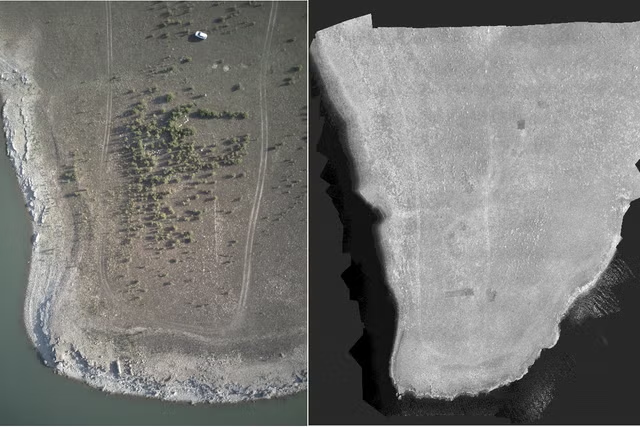The North Star has guided navigators for centuries, but scientists have only now noticed that it has a strange spotted surface.
The star has been discovered to be covered in light and dark blotches after it was imaged close-up for the very first time, according to a new paper in The Astrophysical Journal.
The star, more formally called Polaris or α Ursae Minoris, is located in the constellation Ursa Minor, sitting almost directly above Earth's North Pole in the sky, making it ideal for orientation.
"The CHARA images revealed large bright and dark spots on the surface of Polaris that changed over time," Gail Schaefer, director of Georgia State University's Center for High Angular Resolution Astronomy (CHARA) Array in California, which the researchers used to study the star, said in a statement.
This marks the first time a Cepheid variable—a strange, pulsating type of star that includes Polaris—has been observed up close.
Polaris is unique from Earth's perspective because it is almost exactly aligned with Earth's rotational axis, directly above the North Pole. As a result, while other stars appear to move across the sky throughout the night due to Earth's rotation, Polaris remains in nearly the same spot, serving as a fixed point of reference in the northern sky, always indicating true north.
The North Star is a triple star system, situated between about 430 and 450 light-years from Earth, with Polaris being the brightest star of the three. The Polaris itself is a strange pulsating variable star known as a Cepheid variable.
Cepheid variables are a type of star that pulsates radially, varying in diameter and temperature, which results in changes in their brightness over regular periods. Polaris' pulsating period is about four days, fluctuating between brighter and dimmer.
These Cepheid variables are useful to astronomers for measuring cosmic distances, as their true brightness depends on how long their pulsation period is: the longer the period of pulsation, the brighter the star. Astronomers can determine the absolute brightness of a Cepheid variable simply by measuring its pulsation period, and by comparing this to its apparent brightness (how bright it appears from Earth), they can calculate the distance to the star. This makes Cepheid variables essential "standard candle" tools for determining distances to galaxies and other celestial objects and allows astronomers to measure the rate of the universe's expansion.
In the new paper, the researchers describe how they aimed to use CHARA to measure the 30-year-long orbit of Polaris' fainter companion.
"The small separation and large contrast in brightness between the two stars makes it extremely challenging to resolve the binary system during their closest approach," Nancy Evans, an astronomer at the Harvard & Smithsonian Center for Astrophysics, said in the statement.
The MIRC-X camera allowed the researchers to get a detailed view of the surface of Polaris itself, revealing the strange dark and light patches on the star. They also found that Polaris has a mass of five times the Sun's, and a diameter 46 times larger.
"We plan to continue imaging Polaris in the future," John Monnier, an astronomy professor at the University of Michigan, said in the statement. "We hope to better understand the mechanism that generates the spots on the surface of Polaris."
Do you have a tip on a science story that Newsweek should be covering? Do you have a question about Polaris? Let us know via science@newsweek.com.
References
Roettenbacher, R. M., Baron, F., Anugu, N., Davidson, J. W., Kervella, P., Bras, G., Proffitt, C., Mérand, A., Karovska, M., Jones, J., Lanthermann, C., Kraus, S., ... Viviani, G. (2024). The Orbit and Dynamical Mass of Polaris: Observations with the CHARA Array. The Astrophysical Journal, 971(2), 190. https://doi.org/10.3847/1538-4357/ad5e7a
Disclaimer: The copyright of this article belongs to the original author. Reposting this article is solely for the purpose of information dissemination and does not constitute any investment advice. If there is any infringement, please contact us immediately. We will make corrections or deletions as necessary. Thank you.



